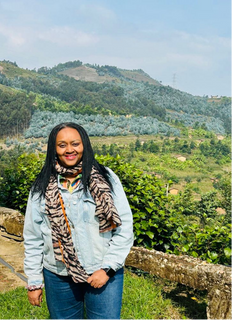
Conservation Biology
Group

Western Province of Rwanda, July - August 2025
During July and August 2025, I embarked on my very first fieldwork for data collection. The experience was both exciting and rewarding, while at the same time challenging and highly instructive. By the end, I returned feeling both transformed by the process and deeply exhausted by the volume of work.

The first week of July coincided with a series of public holidays: Independence Day on July 1st and Liberation Day on July 4th, with the government declaring the remaining three days as holidays as well. This gave me valuable time to organize: I met and trained my team of research assistants, completed the necessary paperwork and logistics, and scheduled meetings and interviews for the weeks ahead in rural areas. Together with the team, we reviewed the questionnaire carefully, ensuring a shared and common understanding — especially regarding translation from English into Kinyarwanda. I also had the opportunity to pre-test the questionnaire for some minor adjustments before beginning.
Our field sites were in the Western Province, a region with rich and diverse ecosystems but also highly vulnerable to degradation. Because of these challenges, it has become the focus of numerous local and international initiatives around ecosystem restoration, climate change adaptation, and environmental protection. For this reason, our broader project — “A Social-Ecological Systems Approach to Inform Ecosystem Restoration in Rural Africa” — is working in this region. My specific subproject component centers on Governance for Environmental Justice, guided by the conceptual framework outlined in these interconnected work programs in the diagram :

Despite certain obstacles, I successfully carried out the planned activities in the four districts covered, which are Rutsiro, Ngororero, Nyabihu, and Rubavu. In each district, three villages were selected, and I conducted semi-structured interviews with seven farmers (both women and men) per month, totaling 21 interviews per district. Additionally, I organized two focus group discussions, each with eight participants, adding another 16 voices per month. This made a total of 148 people per month for semi-structured interviews and focus group discussions. Additionally, we interviewed a wide range of key informants, including local authorities, technicians, representatives of civil society, and development partners.

Among the districts, Rutsiro stood out as my favorite. Participants were particularly motivated, punctual, and knowledgeable, making the conversations highly enriching. July was the most productive month, while August proved more difficult, with several meetings being canceled or postponed at the very last minute.

The main challenges included the long travel times on difficult, poorly maintained roads to reach remote villages, with some cancellations being late due to unexpected events or unplanned work commitments.
Some more Impressions from the field:







